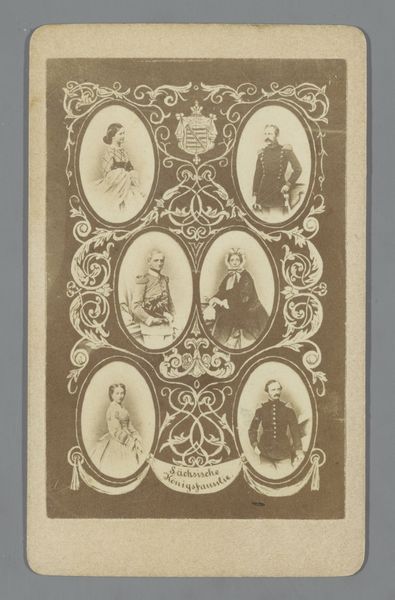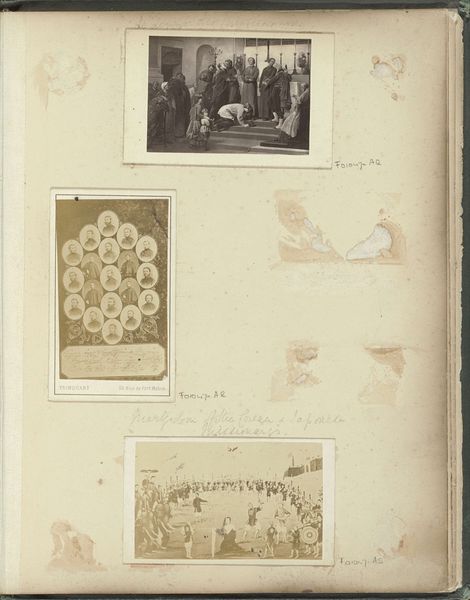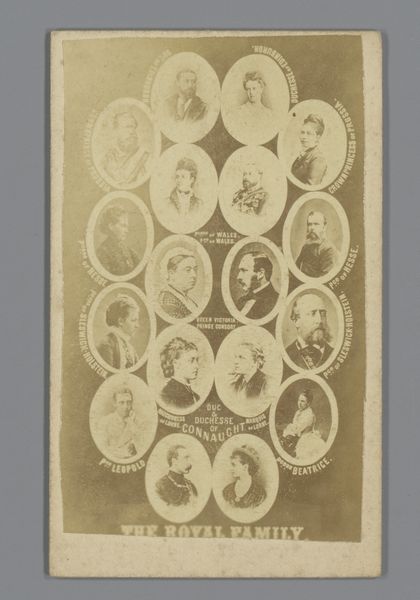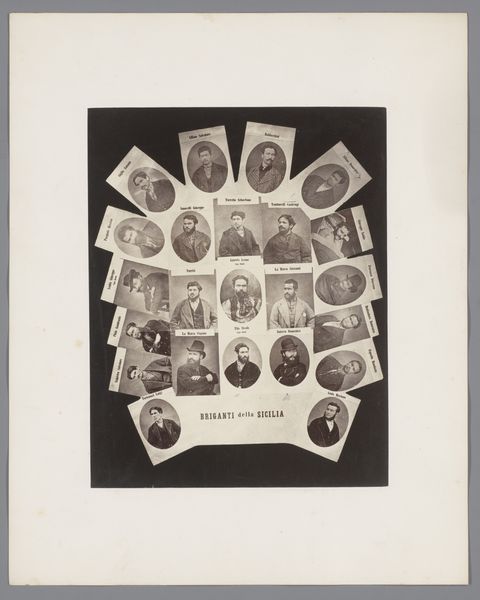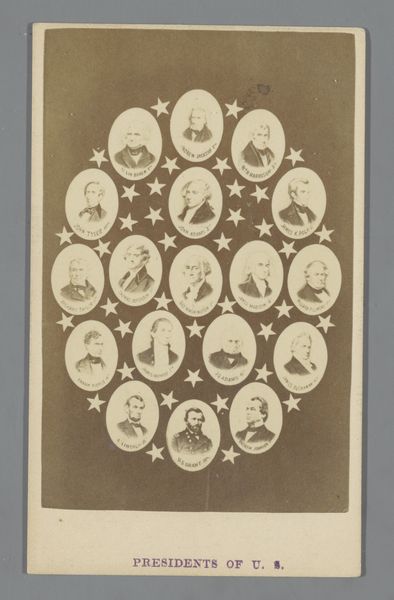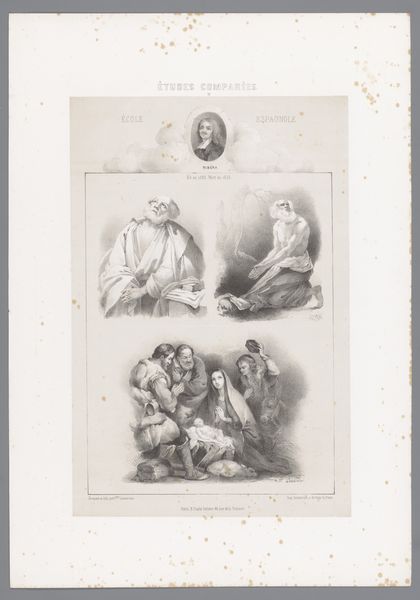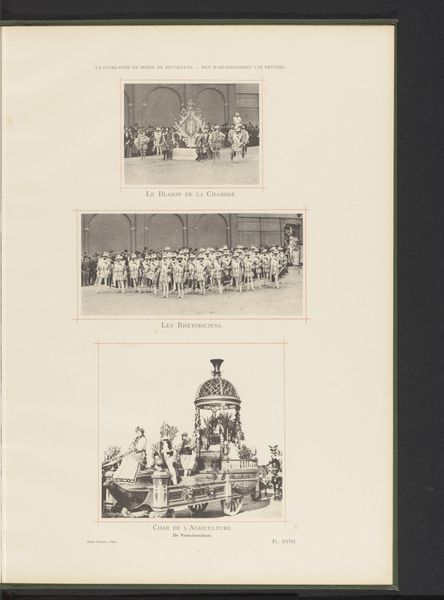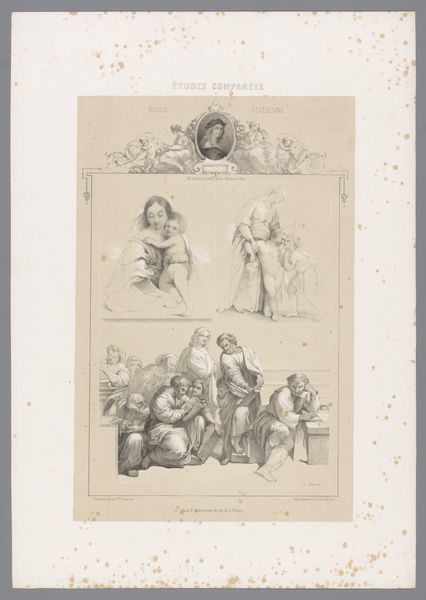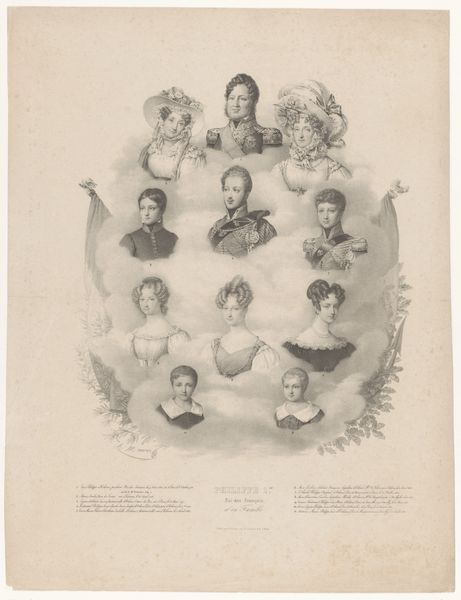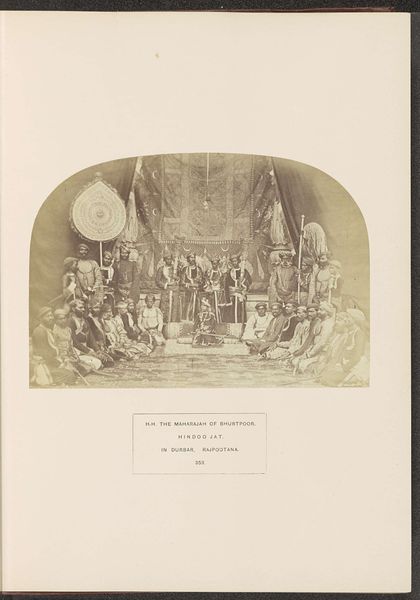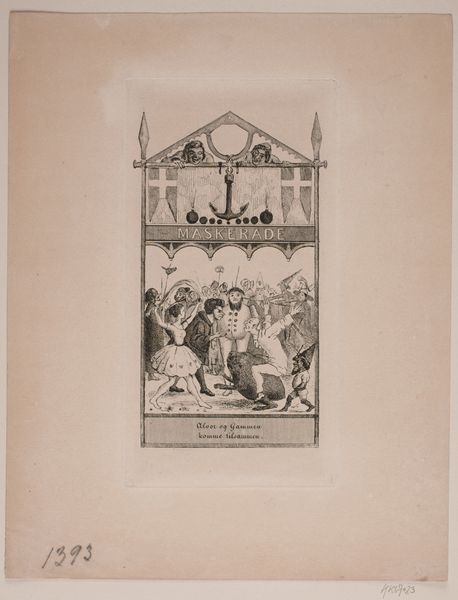
Compositie (‘mosaïque’) met portretten van leden van Seminaire de la Chapelle St. Mesmin c. 1860 - 1875
0:00
0:00
photography, albumen-print
#
portrait
#
photography
#
group-portraits
#
albumen-print
Dimensions: height 105 mm, width 61 mm
Copyright: Rijks Museum: Open Domain
Curator: This is "Compositie (‘mosaïque’) met portretten van leden van Seminaire de la Chapelle St. Mesmin," a photographic piece attributed to André-Adolphe-Eugène Disdéri, dating circa 1860-1875. It is an albumen print. What are your first thoughts on it? Editor: Initially, I'm drawn to the sheer material effort, and technical skill, involved in compiling so many individual prints. Look at the labor invested here. It speaks volumes about nineteenth-century production and consumption. Curator: The composition immediately presents an organized hierarchy. We see the portraits arranged in a distinct mosaic, the central figure is surrounded by a ring of smaller portraits, topped off by the entire seminary. Consider the visual symbolism, this is carefully planned, wouldn't you agree? Editor: Oh, absolutely. I'd say the specific choices made are inherently tied to a cultural hierarchy as much as visual ones. Albumen printing demanded specific materials and knowledge; photography wasn’t the accessible medium it is today. So, access to this level of portraiture and photographic assemblage indicated privilege, power, and an awareness of visual marketing. Curator: In this context, each portrait serves not just as an individual representation but contributes to the overall idea of authority and theological infrastructure. These men, captured with precision, were essential figures whose position within the Church is made apparent by where they're placed. Editor: It is undeniable that such construction would serve the Church in power. What is of particular interest for me is how exactly a single image could contain this degree of labour –from the subjects needing to pose and wait for exposure to the many stages of physical manipulation, especially in printing. Curator: True. The mosaic composition could mirror theological models emphasizing unity under a divine authority, the visual representation enforcing real societal hierarchy. Editor: Perhaps this photoportrait reminds us of the crucial role the printing press and, later, photography served: it allowed ideas, philosophies and individuals to become almost commodities in the eyes of consumers. I have a feeling this piece must have reached a wide audience. Curator: Indeed. We can also study it on purely formal grounds. Its semiotic complexity opens up multiple interpretive pathways, revealing both historical and theoretical understanding of this image. Editor: Ultimately, Disdéri's creation functions as both document and artifact, showing the intricate relationship between art, material conditions, and belief systems in the modern world. Curator: Well articulated. I would say it challenges us to reconsider simple readings and embrace its depth of artistry.
Comments
No comments
Be the first to comment and join the conversation on the ultimate creative platform.

